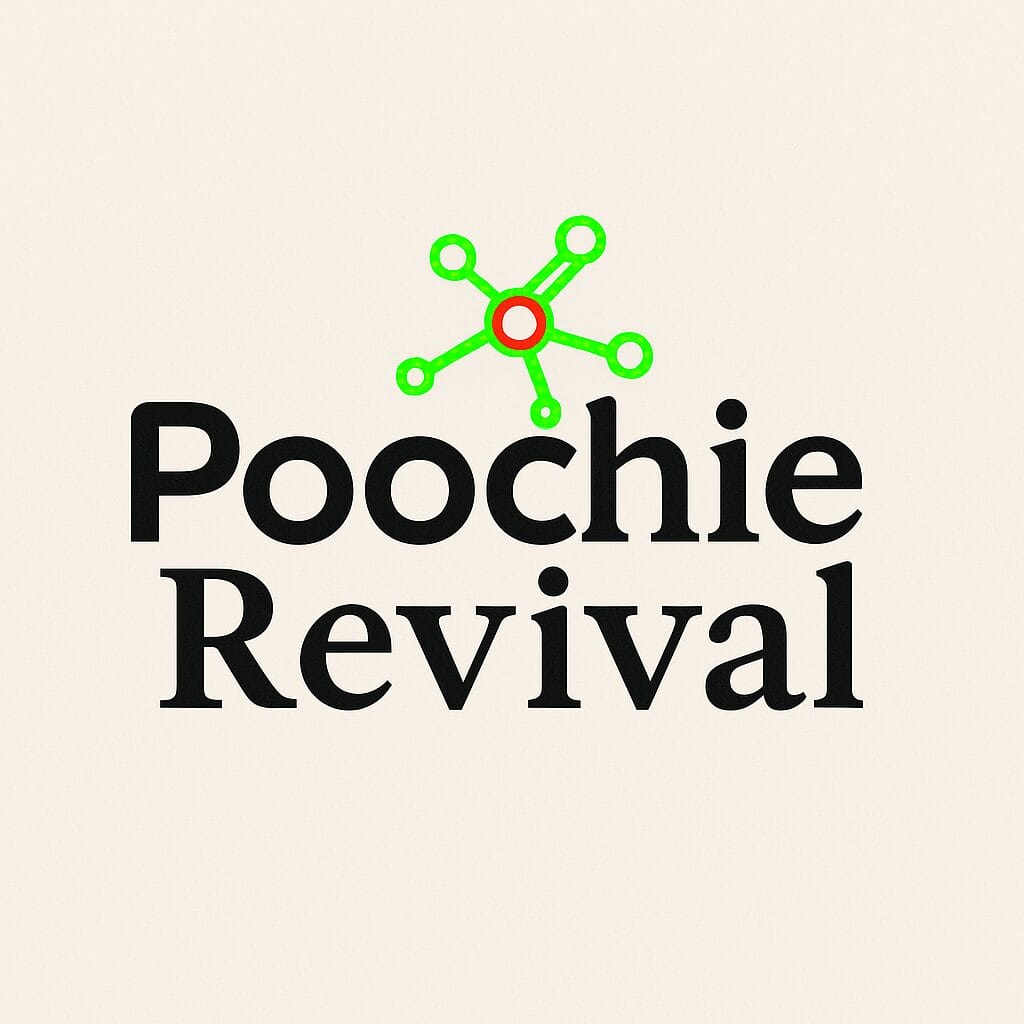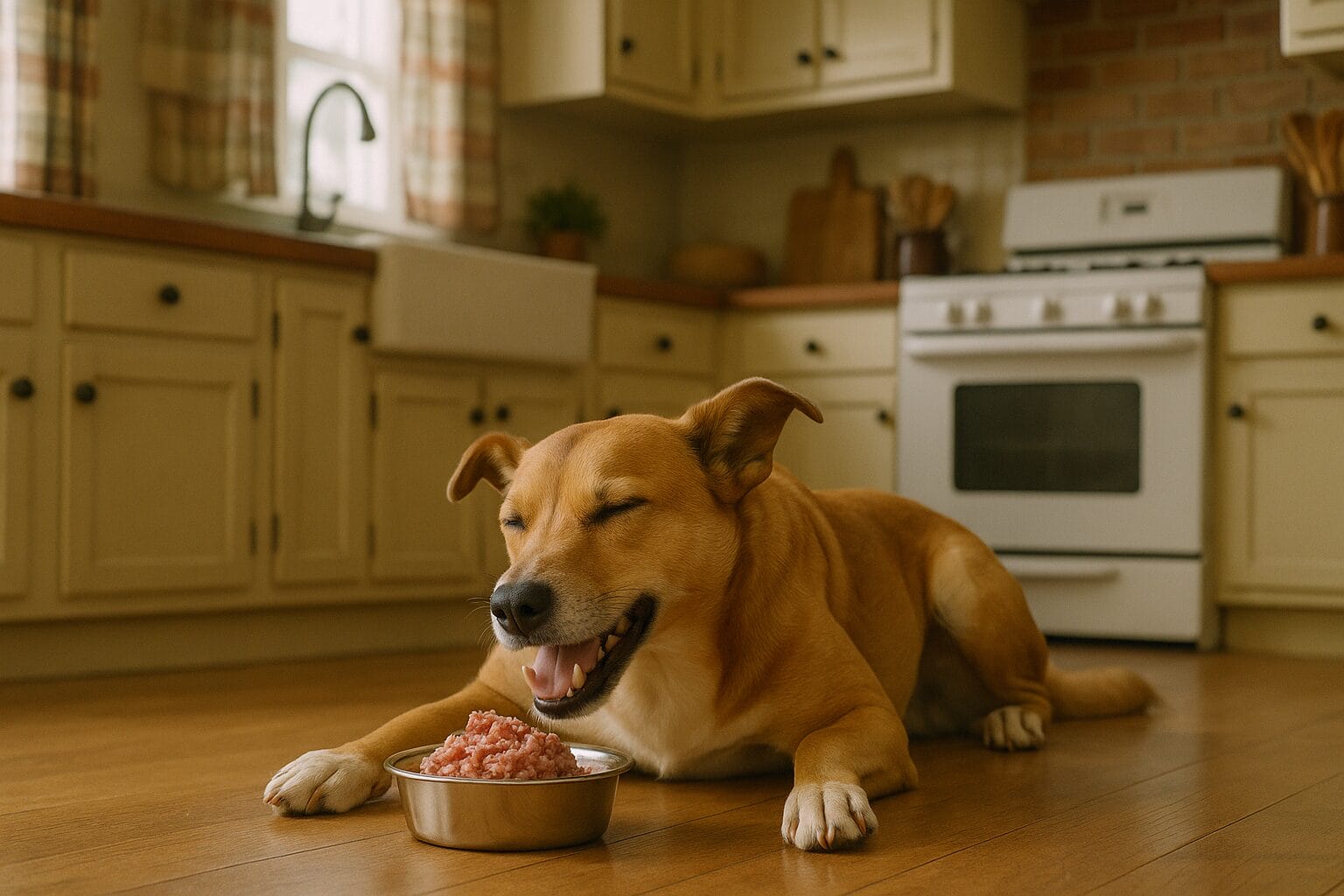The two most common questions in the dog world are which dry food to buy and how to transition to raw feeding so that the dog gets everything it needs. The first is the easiest to answer, because there is no answer. No one can know what to buy, because “worthwhile” depends on an overwhelming number of factors and, most importantly – whether brand X suits the dog – no one knows in advance. Starting raw feeding is a slightly broader topic, but it is reasonably easy too. The prerequisite, of course, is that you master the basics of multiplication.
Meat is the Foundation
Raw feeding is based on meat. So, the food used is meat – not porridge, not dry food, and especially not bones. There is, of course, an exception to this, and that is when you have to or want to feed in some other way, such as the 50/50 style or with porridge. But even in those cases, the main focus must be on meat, unless there are health reasons to do otherwise.
The amount of meat is what the dog needs to fill its stomach. If you are transitioning from dry food and do not understand how much meat should be put in the bowl, it is about double the volume of the food bowl compared to what you give of unsoaked dry food.
Quality of Meat
A dog does not need steak, but feeding stomachs, lungs, and cartilage as meat is self-deception and weakens the dog’s nutrition – they are not meat, and they are of no benefit as food. It is good to take a slight look at the product description, and if most of it is considered meat, then the meat is good enough.
As a rule of thumb, if the calcium content is marked as 250 mg/100 g in a meat log, then there is not much bone included (which is often a good thing). If there is more than 1 g/100 g of bone, then more bone has been ground into it, and the meat works better as a calcium supplement than as actual food.
The fat content of the meat also tells its own story. Again, as a rule of thumb, not as an absolute truth, if the fat is
- below 10%, it is lean meat, suitable for those on a diet, but rarely as the only meat even for maintenance
- 12 – 18% is okay
- 20% or more, it starts to lean more towards fat and is an energy supplement, but the amount of protein may be slightly too low; especially in chicken, high fat directly indicates that there is a lot of skin included, and the quality is not high
Color of Meat
It does not matter whether you want to use red or white meat. The difference between chicken, beef, pork, horse, lamb, or reindeer is primarily in price, secondly in fat content, and thirdly in meat quality. Chicken is the easiest and often the cheapest to get. Beef is often the highest quality, and pork is the fattiest. Horse is often too lean and completely overpriced. Lamb and reindeer are almost always the lowest quality because the best parts are utilized for humans, and the worst scraps, cartilage, and bones are left for dogs.
At some point, it is worth checking out a webinar that explains what meat really means.
Fish is a bit of an exception, and what makes it better is the composition of its fat – the famous omega-3 fatty acids. Fish can also provide vitamin D. For the intake of omega-3 fatty acids EPA and DHA, the fish would have to be wild, rainbow trout does not count. Additionally, the fish should be fish, not ground bones and fins.
Raw or Cooked
If you want to boil or cook the meat, nothing stops you. Giving it raw is just easier and saves on energy bills. Cooking does not spoil or destroy anything, and nutrients (a Google-friendly search term: nutrients) are not destroyed, lost, or changed into an unabsorbable form. There is a slight heat loss, but it does not matter.
Cooking in the microwave or simmering is a slightly “friendlier” way to prepare than boiling, because when boiling, some nutrients dissolve in the water. In frying, a little fat can be drained. Again, it does not matter to the whole.
Salmonella and Other Food Poisoners
It is difficult to catch any disease from domestic raw meat. Practically impossible. Exceptions are deer and lake fish. In the aforementioned game, it is advisable to at least cook the liver, and in fish, the broad tapeworm may lurk, which can be dealt with by freezing or cooking.
Salmonella cannot be contracted from Finnish food unless the food handler has contaminated it. That too is extremely rare. So, in that respect, eggs and chicken can be used without worry.
Normal kitchen hygiene should still be followed, and hands should be washed at least after handling. Additionally, it is advisable to reserve separate kitchen utensils and dishes for dogs. The freezer can be shared with humans, provided there is enough space.
Worming
Raw feeding is not related to internal parasite treatments, i.e., worming. Not even when the dog voluntarily eats a mouse, vole, hare, or deer it has found.
Internal Organs
In raw feeding for dogs, a considerable portion of vitamins and minerals come from internal organs. When the genuinely usable internal organs are only liver and kidneys, of which the only advantage of kidneys is selenium, it is practically always about the liver.
Liver is needed at least 15 g/10 kg given once a week. You can give more, but if you give too much at once, the result may be diarrhea due to iron. There are big individual differences in how much liver a dog can tolerate in one feeding, but it is not advisable to more than double the minimum recommendation.
There are differences in the amount of vitamin A in different livers, and the recommendation is given for beef liver. Otherwise, the animal species does not matter, but the amounts may need to be adjusted. In Finland, beef liver is the most commonly used.
Calcium
Calcium is obtained either as a supplement, as bone, or from eggshells. The need is about 80 mg per kilogram of body weight (130 mg/kgME), and the calculated supplement dose can be safely doubled, allowing for some absorption margin. If bone is given, no more than 1 g/kg is needed. If the bones are ground into the meat, you will have to calculate the calcium need based on weight and then add up the amount of calcium from the product description analysis to determine how much of the product you need.
Anything that exceeds the aforementioned amounts is unnecessary and is the reason for fears of intestinal blockages. When within reasonable amounts, there is no risk.
Other Supplements
The common belief is that raw provides everything needed. This is mainly true only if the feeding is composed according to this FAQ by any measure. Still, there are a couple of deficiencies that must be obtained as supplements. If you do not want to give supplements, you have two options: let the dog live with deficiencies or switch to dry food.
- Vitamin D 0.7 µg/kg, rounded to a reasonable amount, i.e., what you can easily buy. You can also give it once a week, in which case the amount must be multiplied by seven.
- Zinc 2 mg/kg, rounded to a reasonable amount. Given every day.
- Iodine can be obtained from, for example, seaweed or salt. The iodine requirement is 15 µg per kilogram of body weight (29.6 µg/kgME). Seaweed is sufficient if given a gram/40 kilos, i.e., about a quarter of a teaspoon. Iodized salt is needed about ½ teaspoon for a 30-kilogram dog – calculate your dog’s amount from those up and down. Overdosing is not dangerous, so you do not need to be extremely precise.
- Vegetable oils are mostly unnecessary, but you can, of course, add a splash to provide a little vitamin E
Start Feeding
To start raw feeding, all you need is meat. You can give the food to the dog and think about balancing it later, it is not that urgent. You can find the basics in Poochie Revival articles.
The main thing is to remember that with raw feeding, you cannot break or make your dog sick – at least if you follow the main guidelines. Raw feeding is like cooking for yourself at home, except you do not have to cook anything. But if you feel uncertain, nothing forces you to switch to raw feeding – dry foods are a perfectly functional way to feed for most.
Don’t Be Alone
Raw feeding is mostly easy, but still, many are left wondering about supplements. Or you are not sure if the amounts are even close to correct. Never think that you are the only one in the world struggling with these issues. You are certainly not, and learning something new is always difficult. Do not struggle alone, but ask! Poochie’s forum is a good place for that and more general discussion.
Often, you just get too much advice. Some of the advice is certainly well-meaning, but it may not relate at all to what you asked. Some advise incorrectly because they do not really know. When you are unsure, then use the forum. We, as a community, will explain how things are and how exactly your dog should be fed. Things are unfamiliar to you, but familiar to us, and I guarantee that you cannot ask something that countless others have not already asked before you. I mean that you cannot ask stupid or crazy things – you should ask what you do not know, and we will answer and tell you a little more.



